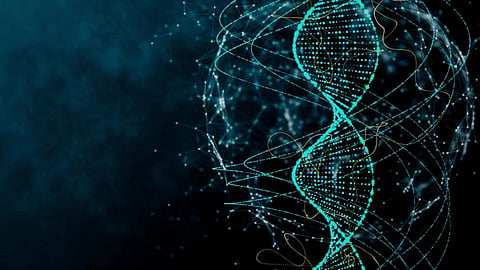

Since Sir Alexander Fleming discovered penicillin, antibiotics have become the crux of modern medicine. However, the continued efficacy of these essential drugs is uncertain due to the global dissemination of antibiotic-resistance determinants. Besides lack of financial aspects is adding fuel to the already decreasing development of new antibiotics in the private sector. Traditional methods of identifying antibiotics by isolating, screening and synthesizing natural compounds can drain the economic resources and are time-consuming. With the rapid increase in drug-resistant microbes, there is a dire need for new antibiotics. It is because the old ones are not as effective as they used to be against this evolved version of pathogens.
However, the recent development in AI at a research project has found a holy-grail solution. Researchers at MIT designed a deep learning model to pick out potential antibiotics that kill bacteria using different mechanisms than those of existing drugs. It can screen hundreds of millions of chemical compounds in just a matter of days. This helped them to identify a powerful new antibiotic compound.
This promising candidate is Halicin, a drug being explored for treating diabetes. Initially, it was identified as c-Jun N-terminal kinase inhibitor SU3327. It is renamed after the astronaut bothering AI system Hal in the classic sci-fi film, 2001: A Space Odyssey. Based on test results, it is discovered that Halicin, killed Mycobacterium tuberculosis, the bug that causes TB Halicin also cleared C difficile. Multidrug-resistant Acinetobacter baumannii (found in mice) and strains of Enterobacteriaceae that are resistant to carbapenems (a group of antibiotics); are two of the three potent deadly pathogens compiled by the Centers for Disease Control and Prevention and World Health Organization. WHO uses these bacteria as the threshold to test new drugs. It was only unable to kill Pseudomonas aeruginosa, a lung pathogen that is generally challenging to treat. However, these were only done in Petri dishes.
To find new compounds using deep neural network, Professor James Collins (Medical Engineering and Science in MIT's Institute for Medical Engineering and Science (IMES) and Department of Biological Engineering) along with Professor Regina Barzilay (Electrical Engineering and Computer Science in MIT's Computer Science and Artificial Intelligence Laboratory (CSAIL)), teamed up with Professor Tommi Jaakkola(Electrical Engineering and Computer Science and the Institute for Data, Systems, and Society), and their students Kevin Yang, Kyle Swanson, and Wengong Jin, to look for any compound that would inhibit the growth of the bacterium Escherichia coli. To achieve this, they fed the program information on the atomic and molecular features of nearly 2,500 drugs and natural compounds, and how well or not the substance blocked the growth of the bug E coli. However, the ability to counter the effects of these microbes is not the only criteria. The team had to make sure the algorithm predicts the toxicity of compounds and eliminate molecules on that basis. They further screened out the compounds that were found too similar to existing antibiotics, which bacteria had developed resistance to. It was run on a pool of 107 million compounds out of available 1.5 billion databases. Conventional methods would have been rendered impractical to surf through this sea of data.
To narrow the search, researchers have sought to understand how bacteria live and multiply, and then pursued compounds that attack those processes (such as by damaging bacteria's cell walls, blocking their reproduction, or inhibiting their protein production). "You start with the mechanisms, and then you reverse engineer the molecule," said Barzilay.
Hence without a doubt, this is a magnificent win for the power of computer-aided drug discovery. Nevertheless, few hurdles must be crossed before AI medicines are launched commercially in the market. Experts should make sure that the drugs do not harm the good bacteria in the human body, nor have major side effects by running tests other than on Petri dishes.
Join our WhatsApp Channel to get the latest news, exclusives and videos on WhatsApp
_____________
Disclaimer: Analytics Insight does not provide financial advice or guidance on cryptocurrencies and stocks. Also note that the cryptocurrencies mentioned/listed on the website could potentially be scams, i.e. designed to induce you to invest financial resources that may be lost forever and not be recoverable once investments are made. This article is provided for informational purposes and does not constitute investment advice. You are responsible for conducting your own research (DYOR) before making any investments. Read more here.
